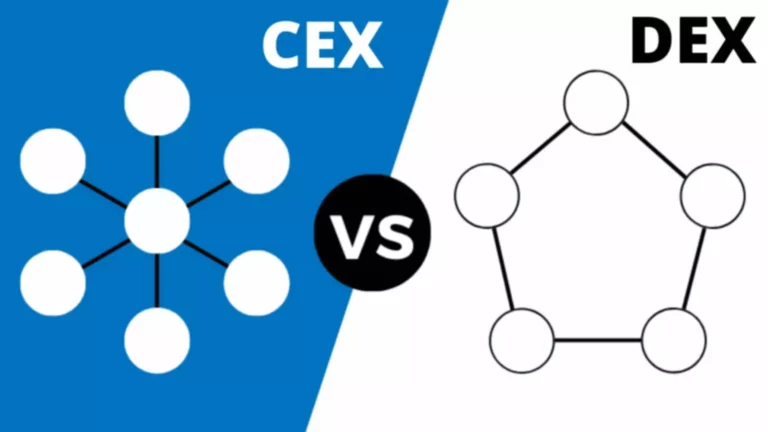Natural-language understanding Wikipedia

NLU is essential in developing question-answering systems that understand and respond to user questions. These systems utilize NLU techniques to comprehend questions’ meaning, context, and intent, enabling accurate and relevant answers. The semantic analysis involves understanding the meanings of individual words and how they combine to create meaning at the sentence level. For example, in the sentence “The cat sat on the mat,” the semantic analysis would recognize that the sentence conveys the action of a cat sitting on a mat. Once the syntactic structure is understood, the system proceeds to the semantic analysis stage.
Other AIMultiple industry analysts and tech team support Cem in designing, running and evaluating benchmarks. It is best to compare the performances of different solutions by using objective metrics. The greater the capability of NLU models, the better they are in predicting speech context. In fact, one of the what is nlu factors driving the development of ai chip devices with larger model training sizes is the relationship between the NLU model’s increased computational capacity and effectiveness (e.g GPT-3). Currently, the quality of NLU in some non-English languages is lower due to less commercial potential of the languages.
Developers can access and integrate it into their apps in their environment of their choice to create enterprise-ready solutions with robust AI models, extensive language coverage and scalable container orchestration. NLP is concerned with how computers are programmed to process language and facilitate “natural” back-and-forth communication between computers and humans. NLU, the technology behind intent recognition, enables companies to build efficient chatbots. In order to help corporate executives raise the possibility that their chatbot investments will be successful, we address NLU-related questions in this article. Expert.ai Answers makes every step of the support process easier, faster and less expensive both for the customer and the support staff.
NLU techniques enable machines to understand and interpret voice commands, facilitating voice-controlled devices, dictation software, and voice assistants. Chatbots and virtual assistants powered by NLU can understand customer queries, provide relevant information, and assist with problem-solving. By automating common inquiries and providing personalized responses, NLU-driven systems enhance customer satisfaction, reduce response times, and improve customer support experiences.
They use techniques like segmenting words and sentences, recognizing grammar, and semantic knowledge to infer intent. Natural language understanding (NLU) is an artificial intelligence-powered technology that allows machines to understand human language. The technology sorts through mispronunciations, lousy grammar, misspelled words, and sentences to determine a person’s actual intent. To do this, NLU has to analyze words, syntax, and the context and intent behind the words. Statistical and machine learning approaches in NLU leverage large amounts of annotated language data to train models. These models learn patterns and relationships from the data and use statistical algorithms or machine learning techniques to make predictions or classifications.

Similarly, a user could say, “Alexa, send an email to my boss.” Alexa would use NLU to understand the request and then compose and send the email on the user’s behalf. Another challenge that NLU faces is syntax level ambiguity, where the meaning of a sentence could be dependent on the arrangement of words. In addition, referential ambiguity, which occurs when a word could refer to multiple entities, makes it difficult for NLU systems to understand the intended meaning of a sentence. Online chatbots, for example, use NLP to engage with consumers and direct them toward appropriate resources or products. While chat bots can’t answer every question that customers may have, businesses like them because they offer cost-effective ways to troubleshoot common problems or questions that consumers have about their products.
Voice Assistants and Virtual Assistants
While NLP covers understanding and generation of language, NLU focuses primarily on understanding natural language inputs and extracting meaningful information from them. These applications represent just a fraction of the diverse and impactful uses of NLU. By enabling machines to understand and interpret human language, NLU opens opportunities for improved communication, efficient information processing, and enhanced user experiences in various domains and industries. Conversational interfaces, also known as chatbots, sit on the front end of a website in order for customers to interact with a business. Because conversational interfaces are designed to emulate “human-like” conversation, natural language understanding and natural language processing play a large part in making the systems capable of doing their jobs.
Natural Language Understanding (NLU) is a subfield of artificial intelligence that aims to teach software to comprehend and interpret human language, enabling more effective interaction between humans and computers. At its most basic, Natural Language Understanding (NLU) is a critical AI technology that enables computers to interpret human language. Throughout this article, we’ll explore how NLU works, why it’s fundamental to AI advancement and its real-world applications. Natural Language Understanding (NLU) refers to the process by which machines are able to analyze, interpret, and generate human language. NLU powers chatbots, enabling them to engage in natural language conversations with users through text or voice.
After preprocessing, NLU models use various ML techniques to extract meaning from the text. One common approach is using intent recognition, which involves identifying the purpose or goal behind a given text. For example, an NLU model might recognize that a user’s message is an inquiry about a product or service. Natural language understanding (NLU) bestows a computer with the ability to interpret human language.
The NLU system uses Intent Recognition and Slot Filling techniques to identify the user’s intent and extract important information like dates, times, locations, and other parameters. The system can then match the user’s intent to the appropriate action and generate a response. NLU is a part of NLP, so I have explained the steps that will help computers understand the intent and meaning of a sentence. The first step of understanding NLU focuses on the meaning of dialogue and discourse within a contextual framework.
Customer Support and Service
Sentiment analysis involves extracting information from the text in order to determine the emotional tone of a text. It works by taking and identifying various entities together (named entity recognition) and identification of word patterns. The word patterns are identified using methods such as tokenization, stemming, and lemmatization. Whether it’s simple chatbots or sophisticated AI assistants, NLP is an integral part of the conversational app building process. And the difference between NLP and NLU is important to remember when building a conversational app because it impacts how well the app interprets what was said and meant by users.
Lookup tables are lists of words used to generate
case-insensitive regular expression patterns. They can be used in the same ways as regular expressions are used, in combination with the RegexFeaturizer and RegexEntityExtractor components in the pipeline. Then, if either of these phrases is extracted as an entity, it will be
mapped to the value credit. Any alternate casing of these phrases (e.g. CREDIT, credit ACCOUNT) will also be mapped to the synonym.
The process of Natural Language Understanding (NLU) involves several stages, each of which is designed to dissect and interpret the complexities of human language. Custom NLU systems, developed specifically for a business’s needs, can significantly enhance performance and relevance. Ease of use and integration options are also critical for the easy adoption of NLU solutions within companies.
Natural language understanding can help speed up the document review process while ensuring accuracy. With NLU, you can extract essential information from any document quickly and easily, giving you the data you need to make fast business decisions. It understands the actual request and facilitates a speedy response from the right person or team (e.g., help desk, legal, sales). This provides customers and employees with timely, accurate information they can rely on so that you can focus efforts where it matters most. Chatbots are necessary for customers who want to avoid long wait times on the phone.
While natural language processing (NLP), natural language understanding (NLU), and natural language generation (NLG) are all related topics, they are distinct ones. Given how they intersect, they are commonly confused within conversation, but in this post, we’ll define each term individually and summarize their differences to clarify any ambiguities. https://chat.openai.com/ Natural language understanding is how a computer program can intelligently understand, interpret, and respond to human speech. Natural language generation is the process by which a computer program creates content based on human speech input. There are several benefits of natural language understanding for both humans and machines.
Remember that if you use a script to generate training data, the only thing your model can
learn is how to reverse-engineer the script. Building NLU models is hard, and building ones that are production-ready is even harder. Here are some tips for designing your NLU training data and pipeline to get the most
out of your bot. However, Computers use much more data than humans do to solve problems, so computers are not as easy for people to understand as humans are. Even with all the data that humans have, we are still missing a lot of information about what is happening in our world.
In NLU systems, this output is often generated by computer-generated speech or chat interfaces, which mimic human language patterns and demonstrate the system’s ability to process natural language input. Another important application of NLU is in driving intelligent actions through understanding natural language. This involves interpreting customer intent and automating common tasks, such as directing customers to the correct departments. This not only saves time and effort but also improves the overall customer experience. Natural language processing (NLP) is a form of artificial intelligence (AI) that allows computers to understand human language, whether it be written, spoken, or even scribbled. As AI-powered devices and services become increasingly more intertwined with our daily lives and world, so too does the impact that NLP has on ensuring a seamless human-computer experience.
Humans can communicate more effectively with systems that understand their language, and those machines can better respond to human needs. Also, NLP processes a large amount of human data and focus on use of machine learning and deep learning techniques. NLP or natural language processing is evolved from computational linguistics, which aims to model natural human language data. NLU provides support by understanding customer requests and quickly routing them to the appropriate team member. Because NLU grasps the interpretation and implications of various customer requests, it’s a precious tool for departments such as customer service or IT. It has the potential to not only shorten support cycles but make them more accurate by being able to recommend solutions or identify pressing priorities for department teams.
As NLU techniques and models continue to advance, the potential for their applications and impact in diverse fields continues to grow. NLU empowers machines to comprehend and interpret human language, bridging the gap between humans and computers regarding effective communication and interaction. It is vital in enabling intelligent systems to process and understand natural language, leading to various applications across diverse industries. Unlike simple language processing, NLU goes beyond the surface-level understanding of words and sentences.
As a demonstration of our commitment to the success of our newly licensed teachers as well as the field of education. Given that 44% of teachers leave the profession Chat GPT within the first five years, teacher induction programs are essential. Without support, high turnover occurs, which negatively impacts student learning.
- The DIETClassifier and CRFEntityExtractor
have the option BILOU_flag, which refers to a tagging schema that can be
used by the machine learning model when processing entities.
- This, in turn, will make it so that more AI-related conveniences and efficient AI processes will be available to you as a user as time goes on.
- Regexes are useful for performing entity extraction on structured patterns such as 5-digit
U.S. zip codes.
- These systems can perform tasks such as scheduling appointments, answering customer support inquiries, or providing helpful information in a conversational format.
Voice assistants and virtual assistants have several common features, such as the ability to set reminders, play music, and provide news and weather updates. They also offer personalized recommendations based on user behavior and preferences, making them an essential part of the modern home and workplace. As NLU technology continues to advance, voice assistants and virtual assistants are likely to become even more capable and integrated into our daily lives. In conclusion, for NLU to be effective, it must address the numerous challenges posed by natural language inputs. Addressing lexical, syntax, and referential ambiguities, and understanding the unique features of different languages, are necessary for efficient NLU systems. Organizations need artificial intelligence solutions that can process and understand large (or small) volumes of language data quickly and accurately.
For instance, the word “bank” could mean a financial institution or the side of a river. Another common use of NLP is for text prediction and autocorrect, which you’ve likely encountered many times before while messaging a friend or drafting a document. This technology allows texters and writers alike to speed-up their writing process and correct common typos.
Here, it derives the meanings of individual words and phrases based on their context, assigning them to predefined categories. It also determines the relationship between different words, allowing it to understand the overall meaning of the sentence or text. These challenges can be addressed by implementing advanced speech recognition technology. One of the significant hurdles in NLU is interpreting ambiguous phrases that have multiple potential meanings. Semantic analysis in NLU is also challenged by the need to appreciate context beyond literal word meanings. Natural Language Generation(NLG) is a sub-component of Natural language processing that helps in generating the output in a natural language based on the input provided by the user.
Python and the Natural Language Toolkit (NLTK)
The most common example of natural language understanding is voice recognition technology. Voice recognition software can analyze spoken words and convert them into text or other data that the computer can process. Natural language understanding is taking a natural language input, like a sentence or paragraph, and processing it to produce an output. It’s often used in consumer-facing applications like web search engines and chatbots, where users interact with the application using plain language. Natural Language Understanding (NLU) is the ability of a computer to understand human language.
But when you use an integrated system that ‘listens,’ it can share what it learns automatically- making your job much easier. In other words, when a customer asks a question, it will be the automated system that provides the answer, and all the agent has to do is choose which one is best. For example, it is difficult for call center employees to remain consistently positive with customers at all hours of the day or night. However, a chatbot can maintain positivity and safeguard your brand’s reputation. Chatbots offer 24-7 support and are excellent problem-solvers, often providing instant solutions to customer inquiries.
NLU software doesn’t have the same limitations humans have when processing large amounts of data. It can easily capture, process, and react to these unstructured, customer-generated data sets. By collaborating with Appquipo, businesses can harness the power of NLU to enhance customer interactions, improve operational efficiency, and gain valuable insights from language data. With our expertise in NLU integration, custom development, consulting, training, and support, Appquipo can be a valuable partner in leveraging NLU technologies for your business’s success.
Considering the complexity of language, creating a tool that bypasses significant limitations such as interpretations and context can be ambitious and demanding. Because of its immense influence on our economy and everyday lives, it’s incredibly important to understand key aspects of AI, and potentially even implement them into our business practices. Here is a benchmark article by SnipsAI, AI voice platform, comparing F1-scores, a measure of accuracy, of different conversational AI providers. If you want to influence the dialogue predictions by roles or groups, you need to modify your stories to contain
the desired role or group label. You also need to list the corresponding roles and groups of an entity in your
domain file.
NLU is used to analyze the natural language content in workplace communications, identifying potential risks, compliance issues, or inappropriate language. The inclusion of NLU in IVR systems makes self-service and call routing more intuitive and responsive to natural language queries. Identifying the roles of words or phrases in a sentence with respect to a specific verb.
Natural language understanding can positively impact customer experience by making it easier for customers to interact with computer applications. For example, NLU can be used to create chatbots that can simulate human conversation. These chatbots can answer customer questions, provide customer support, or make recommendations. Although natural language understanding (NLU), natural language processing (NLP), and natural language generation (NLG) are similar topics, they are each distinct. Natural Language Understanding (NLU) connects with human communication’s deeper meanings and purposes, such as feelings, objectives, or motivation.
To make it easier to use your intents, give them names that relate to what the user wants to accomplish with that intent, keep them in lowercase, and avoid spaces and special characters. In this case, the person’s objective is to purchase tickets, and the ferry is the most likely form of travel as the campground is on an island. All three processors can do some image rendering, but they take on different aspects of this workload. GPUs are the heavy lifters here, specifically designed to render complex imagery for video editing and gaming tasks.
What is NLU (Natural Language Understanding)? – Unite.AI
What is NLU (Natural Language Understanding)?.
Posted: Fri, 09 Dec 2022 08:00:00 GMT [source]
In fact, many NLP tools struggle to interpret sarcasm, emotion, slang, context, errors, and other types of ambiguous statements. This means that NLP is mostly limited to unambiguous situations that don’t require a significant amount of interpretation. Infuse powerful natural language AI into commercial applications with a containerized library designed to empower IBM partners with greater flexibility. Simply put, using previously gathered and analyzed information, computer programs are able to generate conclusions. For example, in medicine, machines can infer a diagnosis based on previous diagnoses using IF-THEN deduction rules. Both NLP and NLU aim to make sense of unstructured data, but there is a difference between the two.
As its name suggests, natural language processing deals with the process of getting computers to understand human language and respond in a way that is natural for humans. Learn how to extract and classify text from unstructured data with MonkeyLearn’s no-code, low-code text analysis tools. With natural language processing and machine learning working behind the scenes, all you need to focus on is using the tools and helping them to improve their natural language understanding. The rapid advancement in Natural Language Understanding (NLU) technology is revolutionizing our interaction with machines and digital systems. With NLU, we’re making machines understand human language and equipping them to comprehend our language’s subtleties, nuances, and context.
In the future, NLU will see advancements in transformer models, zero-shot and few-shot learning, ethical AI, multilingual capabilities, and support for low-resource languages. These developments will significantly shape the field of natural language understanding. Whether you’re on your computer all day or visiting a company page seeking support via a chatbot, it’s likely you’ve interacted with a form of natural language understanding. When it comes to customer support, companies utilize NLU in artificially intelligent chatbots and assistants, so that they can triage customer tickets as well as understand customer feedback. Forethought’s own customer support AI uses NLU as part of its comprehension process before categorizing tickets, as well as suggesting answers to customer concerns.
Banking and finance organizations can use NLU to improve customer communication and propose actions like accessing wire transfers, deposits, or bill payments. Life science and pharmaceutical companies have used it for research purposes and to streamline their scientific information management. NLU can be a tremendous asset for organizations across multiple industries by deepening insight into unstructured language data so informed decisions can be made. To break it down to its bare bones, NLU takes a natural language input (like a sentence or paragraph) and processes it to produce a sensible output. NLU primarily finds its use cases in consumer-oriented applications like chatbots and search engines where users engage with the system in English or their local language.

This component responds to the user in the same language in which the input was provided say the user asks something in English then the system will return the output in English. NLU has opened up new possibilities for businesses and individuals, enabling them to interact with machines more naturally. From customer support to data capture and machine translation, NLU applications are transforming how we live and work. Without NLU, Siri would match your words to pre-programmed responses and might give directions to a coffee shop that’s no longer in business.
I would be happy to help you resolve the issue.” This creates a conversation that feels very human but doesn’t have the common limitations humans do. Natural language generation (NLG) is a process within natural language processing that deals with creating text from data. NLU techniques enable accurate language translation by considering different languages’ semantics, idiomatic expressions, and cultural references. NLU also facilitates localization, adapting content to specific linguistic and cultural conventions for different regions and audiences. NLU enables the extraction of relevant information from unstructured text sources such as news articles, documents, and web pages.
Furthermore, NLU enables computer programmes to deduce purpose from language, even if the written or spoken language is flawed. Both NLU and NLP use supervised learning, which means that they train their models using labelled data. For example, it is the process of recognizing and understanding what people say in social media posts.
Natural language processing is the process of turning human-readable text into computer-readable data. It’s used in everything from online search engines to chatbots that can understand our questions and give us answers based on what we’ve typed. NLG systems enable computers to automatically generate natural language text, mimicking the way humans naturally communicate — a departure from traditional computer-generated text.
Another difference is that NLP breaks and processes language, while NLU provides language comprehension. You can foun additiona information about ai customer service and artificial intelligence and NLP. NLU can be used in many different ways, including understanding dialogue between two people, understanding how someone feels about a particular situation, and other similar scenarios. For example, a computer can use NLG to automatically generate news articles based on data about an event.
What’s the difference in Natural Language Processing, Natural Language Understanding & Large Language Models? – Moneycontrol
What’s the difference in Natural Language Processing, Natural Language Understanding & Large Language Models?.
Posted: Sat, 18 Nov 2023 08:00:00 GMT [source]
Essentially, before a computer can process language data, it must understand the data. Human language is filled with many ambiguities that make it difficult for programmers to write software that accurately determines the intended meaning of text or voice data. Human language might take years for humans to learn—and many never stop learning. But then programmers must teach natural language-driven applications to recognize and understand irregularities so their applications can be accurate and useful. NLU helps computers to understand human language by understanding, analyzing and interpreting basic speech parts, separately.

When a computer acquires proficiency in AI-based NLU, it can serve several purposes — think of voice assistants, chatbots, and automated translations. Speech recognition uses NLU techniques to let computers understand questions posed with natural language. NLU is used to give the users of the device a response in their natural language, instead of providing them a list of possible answers. Techniques for NLU include the use of common syntax and grammatical rules to enable a computer to understand the meaning and context of natural human language. Natural language understanding (NLU) is a technical concept within the larger topic of natural language processing. NLU is the process responsible for translating natural, human words into a format that a computer can interpret.








